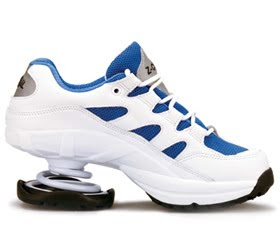What Exactly Brings About Pain Under The Heel

Overview
Plantar fasciitis is thickening of the plantar fascia, a band of tissue running underneath the sole of the foot. The thickening can be due to recent damage or injury, or can be because of an accumulation of smaller injuries over the years. Plantar fasciitis can be painful.
Causes
Plantar fasciitis is caused by straining the ligament that supports your arch. Repeated strain can cause tiny tears in the ligament. These can lead to pain and swelling. This is more likely to happen if your feet roll inward too much when you walk ( excessive pronation ). You have high arches or flat feet. You walk, stand, or run for long periods of time, especially on hard surfaces. You are overweight. You wear shoes that don't fit well or are worn out. You have tight Achilles tendons or calf muscles.
Symptoms
Plantar fasciitis sufferers feel a sharp stab or deep ache in the middle of the heel or along the arch. Another sign is the morning hobble from the foot trying to heal itself in a contracted position overnight. Taking that first step causes sudden strain on the bottom of the foot. The pain can recur after long spells of sitting, but it tends to fade during a run, once the area is warmed up.
Diagnosis
Your doctor will check your feet and watch you stand and walk. He or she will also ask questions about your past health, including what illnesses or injuries you have had. Your symptoms, such as where the pain is and what time of day your foot hurts most. How active you are and what types of physical activity you do. Your doctor may take an X-ray of your foot if he or she suspects a problem with the bones of your foot, such as a stress fracture.
Non Surgical Treatment
Give your painful heel lots of rest. You may need to stay completely off your foot for several days when the pain is severe. Your healthcare provider may recommend or prescribe anti-inflammatory medicines, such as aspirin or ibuprofen. These drugs decrease pain and inflammation. Adults aged 65 years and older should not take non-steroidal anti-inflammatory medicine for more than 7 days without their healthcare provider’s approval. Resting your heel on an ice pack for a few minutes several times a day can also help. Try to cushion your foot. You can do this by wearing athletic shoes, even at work, for awhile. Heel cushions can also be used. The cushions should be worn in both shoes. They are most helpful if you are overweight or an older adult. Your provider may recommend special arch supports or inserts for your shoes called orthotics, either custom-made or off the shelf. These supports can be particularly helpful if you have flat feet or high arches. Your provider may recommend an injection of a cortisone-like medicine. Lose weight if needed. A night splint may be recommended. This will keep the plantar fascia stretched while you are sleeping. Physical therapy for additional treatments may be recommended. Surgery is rarely needed.

Surgical Treatment
Surgery for plantar fasciitis can be very successful in the right patients. While there are potential complications, about 70-80% of patients will find relief after plantar fascia release surgery. This may not be perfect, but if plantar fasciitis has been slowing you down for a year or more, it may well be worth these potential risks of surgery. New surgical techniques allow surgery to release the plantar fascia to be performed through small incisions using a tiny camera to locate and cut the plantar fascia. This procedure is called an endoscopic plantar fascia release. Some surgeons are concerned that the endoscopic plantar fascia release procedure increases the risk of damage to the small nerves of the foot. While there is no definitive answer that this endoscopic plantar fascia release is better or worse than a traditional plantar fascia release, most surgeons still prefer the traditional approach.
Prevention
There are certain things that you can do to try to prevent plantar fasciitis, especially if you have had it before. These include regularly changing training shoes used for running or walking. Wearing shoes with good cushioning in the heels and good arch support. Losing weight if you are overweight. Regularly stretching the plantar fascia and Achilles tendon, especially before exercise. Avoiding exercising on hard surfaces.